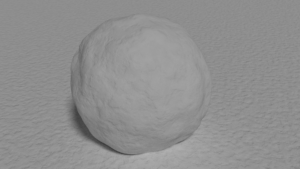Viruses form a shell around themselves called a capsid. This shell, or capsid, protects the viruses genetic material, or RNA, from intruders. The most interesting part about the capsids is how they are formed. Like all DNA or RNA molecules, they include instructions for their replication. Ribosomes take the instructions stored in the DNA or RNA to build more of those same molecules. But viruses have a limited amount of storage, which means the instructions held in their RNA cannot have complex assembly steps. Instead, they have a...
Loading...
Since the original movie, Episode IV, was released, millions of kids, and now adults, have fantasied about being a Jedi Knight. Who wouldn't? Lightsabers, the "Elegant Weapons" of Star Wars, are awesome. They are like a Swiss army knife; they can deflect blaster bolts, they can cut through anything, they retract into their power block, and they glow in different colors. What is there to not like? So I was not surprised when I learned about a new sport, Saber laser (Lightsaber is trademarked). A new take on...
I have always maintained the scariest trait of Trump is not just what he says to the crowds to rile them up, or his narcissism, or lack of mastery of language, or his fake orange-tan, or lies. While all of those are scary on their own, it is his lack of shame I fear most. Most of us do not give shame the credit it deserves. Shame is one of the most effective tools we, the people, have to keep powerful people in check. The focus of shame...
Loading...
Viruses form a shell around themselves called a capsid. This shell, or capsid, protects the viruses genetic material, or RNA, from intruders. The most interesting part about the capsids is how they are formed. Like all DNA or RNA molecules, they include instructions for their replication. Ribosomes take the instructions...
Since the original movie, Episode IV, was released, millions of kids, and now adults, have fantasied about being a Jedi Knight. Who wouldn't? Lightsabers, the "Elegant Weapons" of Star Wars, are awesome. They are like a Swiss army knife; they can deflect blaster bolts, they can cut through anything, they...
I have always maintained the scariest trait of Trump is not just what he says to the crowds to rile them up, or his narcissism, or lack of mastery of language, or his fake orange-tan, or lies. While all of those are scary on their own, it is his lack...



